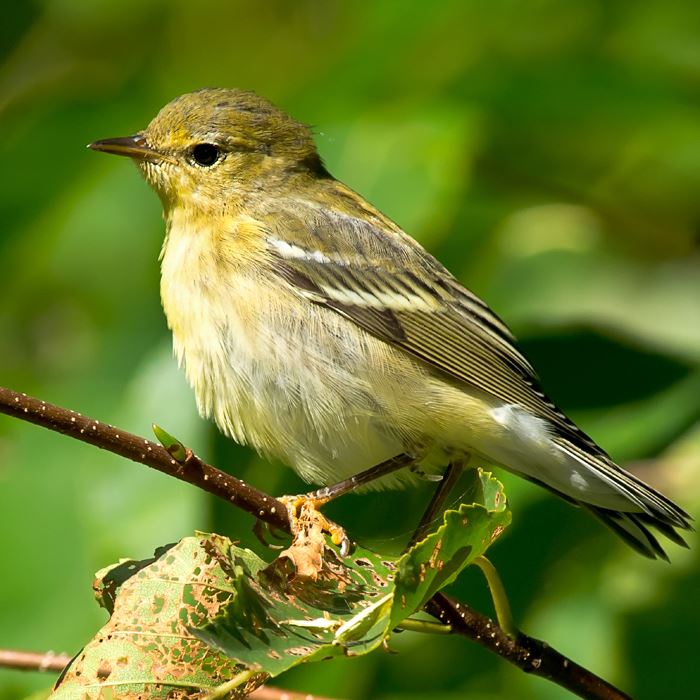Filling the Fall Skies

By Karen Menard
As early as July each year, some species of migratory birds orient themselves toward the southern skies, beginning their fall flights back home. Overall, migration in the fall lasts a lot longer than migration in the spring. Flights of sandhill cranes, as well as some waterfowl and gull species actually stretch into the cold days of December.
Each season, millions of songbirds traverse the skies over northwest Ohio at night on their journey to southern climes seeking sites that provide balmy weather conditions, as well as abundant food sources for the next six to eight months. Considered neotropical migrants, their final, long distance destinations take them to parts of the Caribbean, as well as Central and South America -- thousands of miles from their breeding grounds. Many species fly from as far away as the boreal forests of Canada and Michigan’s Upper Peninsula.
The blackpoll warbler, a common spring and fall migrant through northwest Ohio, is a songbird that weighs about as much as a pencil. This tiny, yet remarkably efficient machine of an animal will propel its body over the open water of the Atlantic for about 2,000 miles continuously for about 40 to 50 hours. Flapping approximately twenty times a second, this warbler’s wings will total close to three million flaps upon completion of its amazing overwater journey!
Blackpolls use the Metroparks and other natural areas along the Lake Erie shore for appropriate stopover habitat to rest and refuel, feasting on insects and berries. Without appropriate rest stop habitat, these birds would not be successful along their exhausting journey.
Why is the Toledo area so important to birds during spring and fall? Northwest Ohio is a crossroads for two major migratory bird flyways.
New Tool
To understand more about radar ornithology and to see live migration maps of birds flying overhead and forecasted to be in our area, go to the new “BirdCast” website. The site has real-time information regarding the migration phenomenon.
--
Photo: Blackpoll Warbler, fall plumage
Did you know?
You can help migratory birds in the following ways:
- Plant native, berry producing shrubs such as viburnums and dogwoods to provide nutritious food for resting birds
- Move bird feeders less than .5 m from windows and use window clings or dangling parachute cords to prevent collisions.
- Turn off indoor lights which disorient birds migrating at night